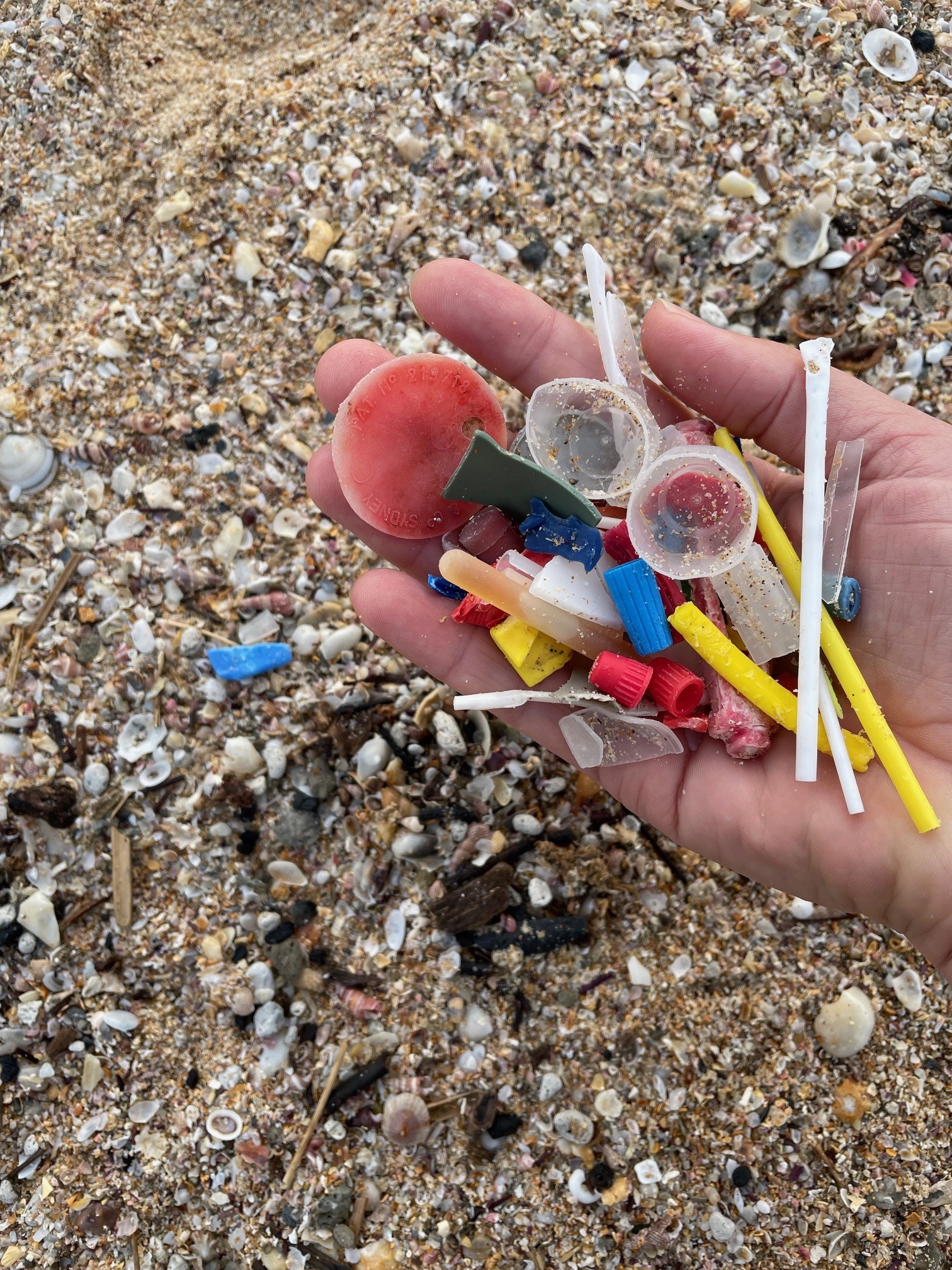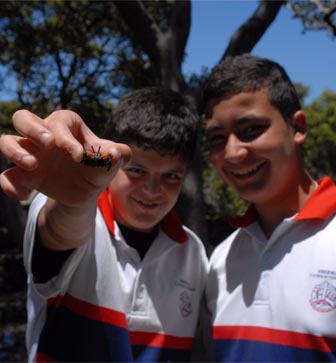Stage 5
Science excursions
Auseco’s Stage 5 Science excursions are linked to syllabus outcomes from the NSW Science 7-10 Syllabus (2018) until the end of 2025. Updated field trip programs aligned to the new 2023 Science 7-10 Syllabus are available for preview in the latter half of 2025 in time for delivery in 2026.

Materials and
Environmental Sustainability
NEW IN 2026: Can plastics be used sustainably? Investigate polymers and their impact on the environment in this combined excursion.
Syllabus outcomes from this field trip
SC5-ENV-01 A student analyses the impact of human activity on the natural world
SC5-MAT-01 A student assesses the uses of materials based on their physical and chemical properties
SC5-WS-03 A student designs safe, ethical, valid and reliable investigations
SC5-WS-06 A student analyses data from investigations to identify trends, patterns and relationships, and draws conclusions
SC5-WS-07 A student selects suitable problem-solving strategies and evaluates proposed solutions to identified problems
SC5-WS-08 A student communicates scientific arguments with evidence, using scientific language and terminology in a range of communication forms
Coasts
The target of this field study is microplastics and the devastating effect they are having on our wetland and marine ecosystems. Students roll up their sleeves to collect and identify microplastics in some of Sydney’s worst pollution hotspots. They’ll also use field equipment to investigate how plastics might be transported in the environment, and catch wetland creatures to study the food chain and bioaccumulation.
This field study is a great opportunity for students to reflect on their own usage of plastics and how their day-to-day choices can have huge impacts for the future of the planet.
Location
- Botany Bay (Kurnell)
- Long Reef (Dee Why)
Program outline
- Morning session: Site briefing, background, microplastics survey
- Midday session: Wind and material transport study
- Afternoon session: Mangrove/seagrass animal catch, food web study
Activities are performed in a rotation to accommodate multiple classes. The timing and location of activities will vary according to factors such as the school’s schedule, number of classes, and the environmental conditions on the day.
Sample worksheets are available which also contain details of scientific skills, equipment and secondary data provided by this program. Contact us to request.

Living World (advanced)
Observe complex interconnections between organisms and their environment in a range of natural ecosystems.
Syllabus outcomes from this field trip
SC5-6WS A student undertakes first-hand investigations to collect valid and reliable data and information, individually and collaboratively
SC5-7WS A student processes, analyses and evaluates data from first-hand investigations and secondary sources to develop evidence-based arguments and conclusions
SC5-14LW A student analyses interactions between components and processes within biological systems
SC5-15LW A student explains how biological understanding has advanced through scientific discoveries, technological developments and the needs of society
Rock platform
The tidal rock platform is the ideal place to encounter nature’s complex processes. We’ll investigate the impact of tidal cycles on species distribution and abundance, and measure some of the abiotic factors that change across the day. We’ll witness interspecific relationships such as predation and commensalism occurring before our eyes, and map energy flows through the ecosystem using a food web.
Location
- Long Reef rock platform (Collaroy)
- Bass Point (Shellharbour) – coming soon!
Program outline
- Morning session: Site briefing, background, tidal zone study
- Midday session: Abiotic testing, symbioses
- Afternoon session: Animal catch, food webs
Activities are performed in a rotation to accommodate multiple classes. The timing and location of activities will vary according to factors such as the school’s schedule, number of classes, and the environmental conditions on the day.
Sample worksheets are available which also contain details of scientific skills, equipment and secondary data provided by this program. Contact us to request.
Wetlands
We’ll investigate a variety of wetland habitats in this program. We’ll begin by studying Grey Mangrove and Strapweed, the dominant plants in their ecosystems, to find out how they survive in their habitats and how they play critical roles in wetland food webs. Students will use scientific instruments to record physical and chemical characteristics of marine and terrestrial environments, and capture animals from the mangrove and seagrass habitats for a close encounter.
Location
- Botany Bay (Kurnell)
Program outline
- Morning session: Site briefing, background, physical and chemical testing
- Midday session: Plant study, seagrass catch
- Afternoon session: Mangrove catch, food webs
Activities are performed in a rotation to accommodate multiple classes. The timing and location of activities will vary according to factors such as the school’s schedule, number of classes, and the environmental conditions on the day.
Sample worksheets are available which also contain details of scientific skills, equipment and secondary data provided by this program. Contact us to request.
Bushland
Beginning from the ground up, we’ll study the processes and cycles that power the bushland ecosystem. A leaf litter study will show us the importance of decomposers in the nutrient cycle, and we’ll compile a local food web using species we encounter across the day. Students will also measure some important biotic and abiotic characteristics of two distinct vegetation communities in the landscape, and perform water quality tests in a freshwater creek to investigate human impacts on bushland.
Location
- Camp Kedron (Ingleside)
- Camp Coutts (Waterfall)
- Bantry Bay (Frenchs Forest)
Program outline
- Morning session: Site briefing, background, leaf litter survey
- Midday session: Biotic and abiotic testing in two plant communities
- Afternoon session: Creek water study and animal catch
Activities are performed in a rotation to accommodate multiple classes. The timing and location of activities will vary according to factors such as the school’s schedule, number of classes, and the environmental conditions on the day.
Sample worksheets are available which also contain details of scientific skills, equipment and secondary data provided by this program. Contact us to request.
Rainforest
Interactions between rainforest creatures and their environment – helpful, and harmful – form the basis of this field trip. We’ll observe some symbioses between unlikely species, and perform a leaf litter study to investigate the role of decomposers in the nutrient cycle. In two locations, students will test biotic and abiotic parameters to characterise the conditions experienced by rainforest organisms.
Location
- Mt Keira (Wollongong)
Program outline
- Morning session: Site briefing, background, biotic and abiotic testing
- Midday session: Nutrient cycles and leaf litter study
- Afternoon session: Animal catch and food webs
Activities are performed in a rotation to accommodate multiple classes. The timing and location of activities will vary according to factors such as the school’s schedule, number of classes, and the environmental conditions on the day.
Sample worksheets are available which also contain details of scientific skills, equipment and secondary data provided by this program. Contact us to request.
